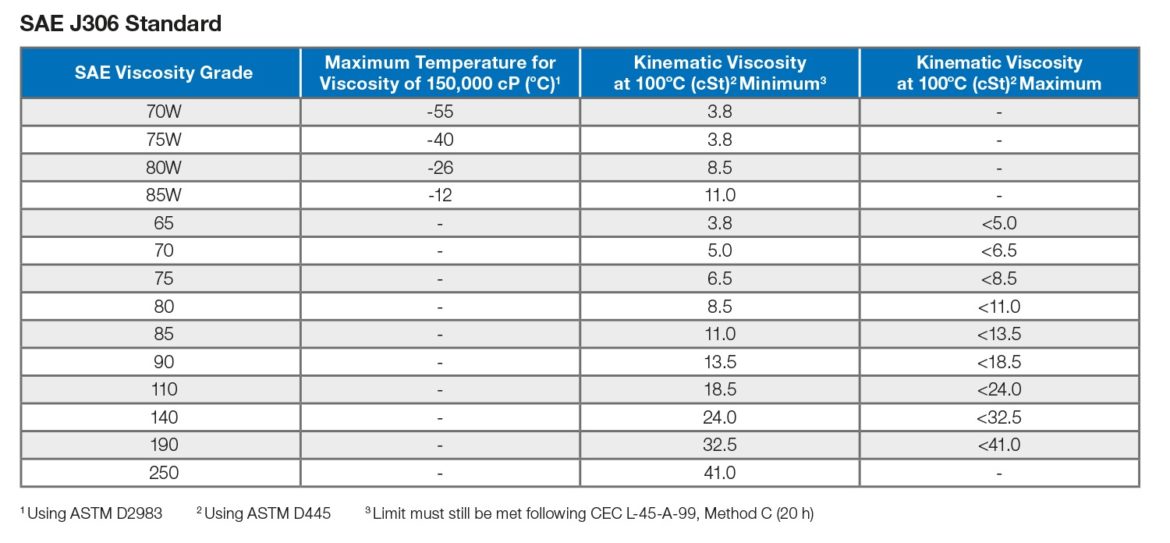Automotive gear lubricants play an important role in the drive for greater fuel efficiency as well as reduced greenhouse gas emissions. OEMs seek to make efficiency improvements across almost every part of the vehicle, including the need for lower viscosity automotive gear lubricants to reduce churning power loss and improve operating efficiency.
The SAE J306 Standard defines the limits for a classification of automotive gear lubricants in rheological terms (i.e. the lubricant’s flow and deformation). This standard is intended for use by OEMs in defining and recommending automotive gear, axle and manual transmission lubricants.
SAE J306 last saw major revisions in 2005, so it is perhaps unsurprising that today’s requirements for lower viscosity automotive gear lubricants are not adequately defined by that revision. This requirement has led to a revision of SAE J306, helping to adequately define current and future low viscosity fluids.
The revised SAE J306 standard, effective February 2019, better outlines the low viscosity grades for future manual transmission fluid and automotive gear oil requirements through the introduction of three new viscosity grades:
- SAE 65
- SAE 70
- SAE 75
At the same time, the existing SAE 80 viscosity grade is being amended to tighten the broad kinematic viscosity window which currently exists.
Lowering the current minimum kinematic viscosity limit from 7.0 cSt to 3.8 cSt @100°C allows for new lubricants as low as SAE 65 to be utilized in conjunction with more modern hardware designs.
The revision also affects the lower viscosity limits of SAE 70W, SAE 75W and SAE 80W as can be seen below:

Lubrizol views this revision with precise viscosity bands as a positive move, because it gives a framework to develop low viscosity fluids with the appropriate balance of efficiency and durability. The introduction of new lower viscosity grades provides the opportunity for more efficient automotive gear lubricants to work in harmony with advanced hardware designs, where the lubricant enables hardware design improvements as well as directly contributing to increased efficiency through its lower viscosity characteristics.
The need for increased efficiency continues at speed. The revision of the SAE J306 standard gives greater flexibility to OEMs and oil marketers wishing to capitalize upon the advantages that higher performance, higher efficiency automotive gear lubricants can deliver as a cost-effective upgrade.
For more information on SAE J306, contact your Lubrizol representative.
For a deeper dive into specifications, see the Lubrizol Ready Reference Guide, the industry's go-to resource for understanding fuel and lubricant performance principles and requirements.









